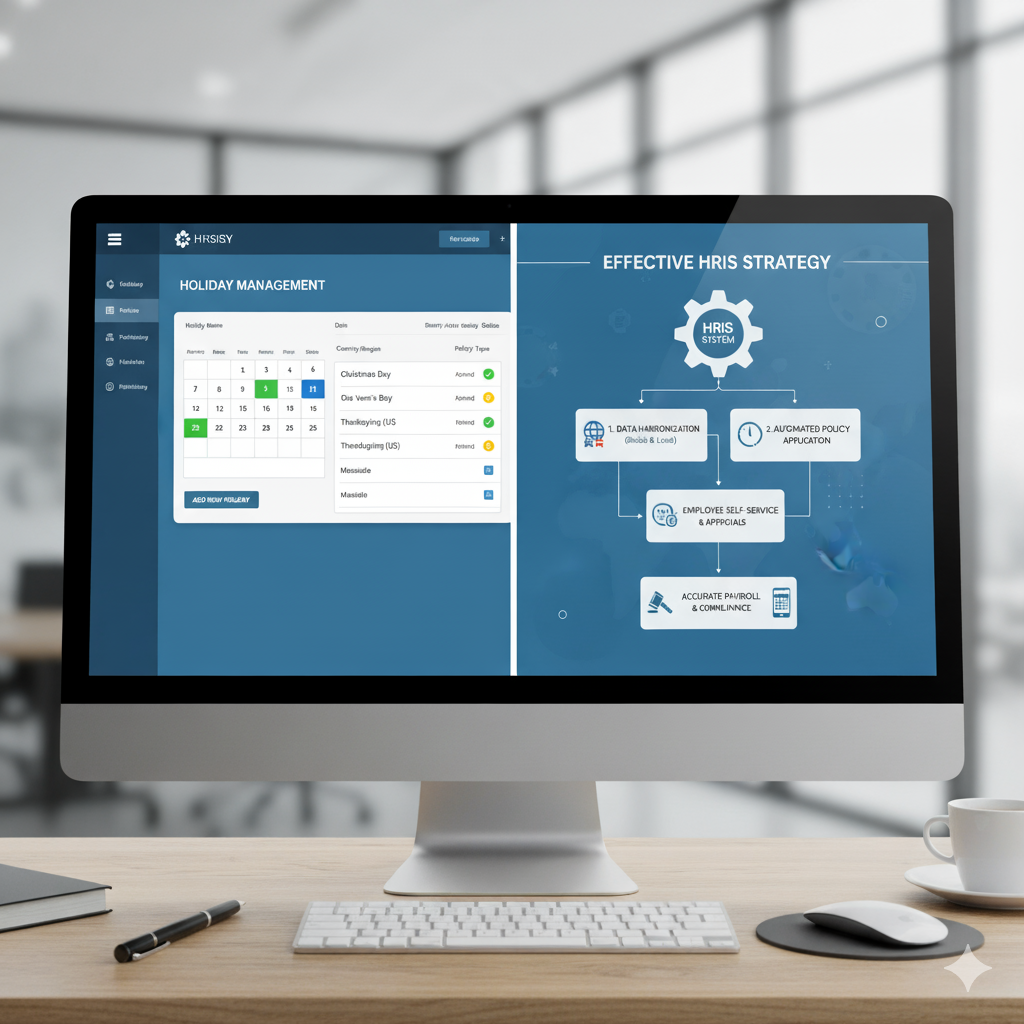Address
Kaypian, San Jose Del Monte City, Bulacan Philippines
Work Hours
Monday to Friday: 8AM - 6PM
Weekend: 10AM - 5PM
Address
Kaypian, San Jose Del Monte City, Bulacan Philippines
Work Hours
Monday to Friday: 8AM - 6PM
Weekend: 10AM - 5PM


Integrated HR. Accurate Payroll.


Integrated HR. Accurate Payroll.

Managing holidays in your HRIS (Human Resource Information System) may seem like a small administrative task, but it plays a critical role in payroll accuracy, attendance tracking, and compliance. In this guide, we’ll show you how to effectively manage holiday tables using the right HR tools and best practices to keep your data accurate and your HR operations running smoothly.
A holiday table (or holiday calendar) is the configuration within your HRIS that defines:
Your HRIS references this data for multiple modules — including payroll, timekeeping, and leave management — ensuring that all calculations reflect the correct schedule.
For example, if a public holiday isn’t properly added to your HRIS holiday table, employees might be incorrectly marked absent or underpaid.
Maintaining an accurate holiday calendar in your HRIS impacts several key HR functions:
✅ 1. Payroll Accuracy
Ensures correct holiday pay, overtime calculations, and salary deductions.
📅 2. Employee Scheduling
Helps managers create work rosters and plan resource coverage around holidays.
⚖️ 3. Legal and Regulatory Compliance
Aligns with labor laws and prevents non-compliance penalties.
💬 4. Employee Experience
Improves transparency and trust when employees see correct holidays reflected in their self-service portals.
Even one missing or duplicated holiday entry can disrupt automated processes — leading to manual corrections and employee dissatisfaction.
Step 1: Review the Previous Year’s Holiday Data
Start by reviewing last year’s entries to identify:
Cross-check with official government and regional holiday announcements to ensure accuracy.
Step 2: Create Separate Holiday Tables by Region
This ensures that employees in different regions see only the holidays relevant to them.
Step 3: Automate Holiday Updates with HR Tools
Many modern HR systems include tools or integrations that let you import or sync holidays automatically.
Examples:
By automating your HRIS holiday updates, you can significantly reduce manual input and human error.
Step 4: Communicate the Updated Calendar
Once your holiday tables are updated, publish them through:
Transparency ensures employees are informed about upcoming holidays and reduces HR inquiries.
Step 5: Test and Validate
Before finalizing your holiday calendar:
Testing helps identify misconfigurations before they impact real payroll runs.
❌ Using the same holiday calendar for all regions.
❌ Forgetting to remove outdated holidays.
❌ Making changes mid-year without notifying payroll or managers.
❌ Not testing after updates.
Even minor oversights can trigger payroll discrepancies and compliance risks.
When managed effectively, your HRIS holiday table:
An accurate and well-maintained HRIS holiday table is essential for smooth HR operations.
By combining automation tools, structured processes, and annual reviews, you can ensure your system always reflects the correct holiday data — keeping your payroll accurate, your employees happy, and your HR workflows efficient.
If you haven’t reviewed your HRIS holiday setup lately, now’s the perfect time to do it. A few proactive steps today can save countless hours of troubleshooting later.